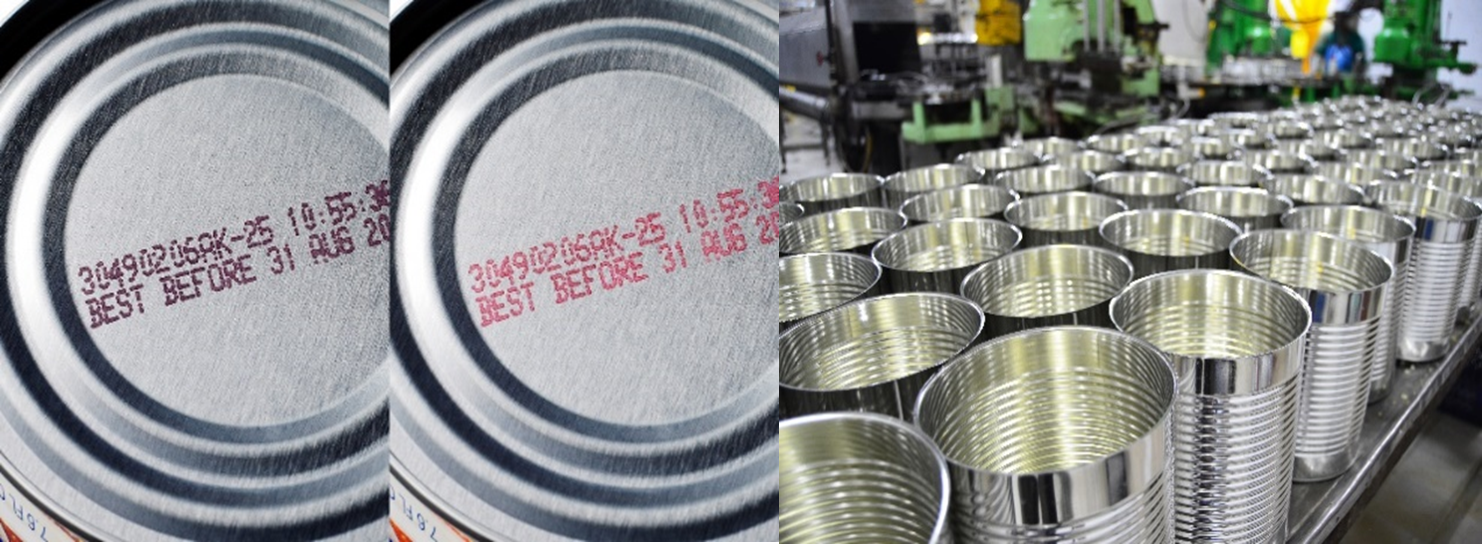The metal can market has seen impressive growth in recent years and appears to be poised for further expansion. The increased use of steel and aluminum cans for food and beverage packaging is partially driven by consumers’ preferences for more sustainable and eco-friendly packaging. Increased demand for recyclable materials, like cans, is seen across the globe. Innovation in canned products and in canning technology is anticipated to further boost both manufacturers’ and consumers’ preferences for metal cans.
CIJ and laser benefits
Historically, coding on metal cans has been dominated by continuous inkjet (CIJ) printing technology. The clear advantages of CIJ lie in its easy handling and setup in production lines, consistently clear codes at high speeds, and unique supplies like thermochromic inks that change color to indicate whether retort or autoclave processes have been successful, like with various canned fruits and vegetables. In recent years, laser marking has become a popular option for coding on aluminum beverage cans, delivering permanent and clear codes that cannot be removed. Lasers need no consumables, thereby helping manufacturers to achieve certain sustainability goals.

Types of codes

Codes on cans serve various purposes. In most cases, they include best-before dates for consumers and traceability information like lot numbers. Most simple codes are applied directly to the bottom of cans and consist of two or more lines of alphanumeric information. If further information is required – either for internal purposes or customer-facing – many manufacturers are choosing 2D codes. Driven by their flexibility and consumer demand, the next years will show if variable QR codes will become the industry standard for food and beverage cans.
Inkjet versus laser marking on steel and aluminum cans
Inkjet printers are suitable for printing on both steel and aluminum cans. With consideration for the product’s surface, the manufacturing environment, and supply chain demands, proper ink selection will lead to clear and durable codes.
Lasers deliver contrast by engraving an aluminum can’s surface to generate permanent codes. Lasers are not suitable for steel cans, as they damage the protecting layer or lacquer on steel cans and an engraved code could lead to corrosion.
Stay ahead with real-time updates on the latest news:
Switching to metal cans from PET containers
Beverage manufacturers switching from PET bottles to cans may already be using an inkjet printer or laser marking system. Many of these inkjet systems will likely be usable on cans, although they may require a different ink. Others will require replacement with a new system if the canning line’s speeds are not met.
The CO2 lasers often used for PET coding will not be suitable for coding on aluminum cans, as the CO2 laser beam will be reflected by the metal surface. A fiber laser system with a shorter wavelength will be required for laser marking on cans.
For more information about Videojet coding and marking on metal cans, visit:
Ultra-Fast Inkjet and Laser Printing on Aluminum Cans | Videojet
Aluminum Beverage Can Marking and Coding | Videojet
Videojet Lightfoot™ canning solution
Sources:
Top 6 Canned Beverage Industry Trends to Watch in 2024 | Roberts
Canning Jars Market Size, Trends, Statistics, Forecast To 2030
Canning Equipment Market- Size, Growth, Trends, Share | 2033
